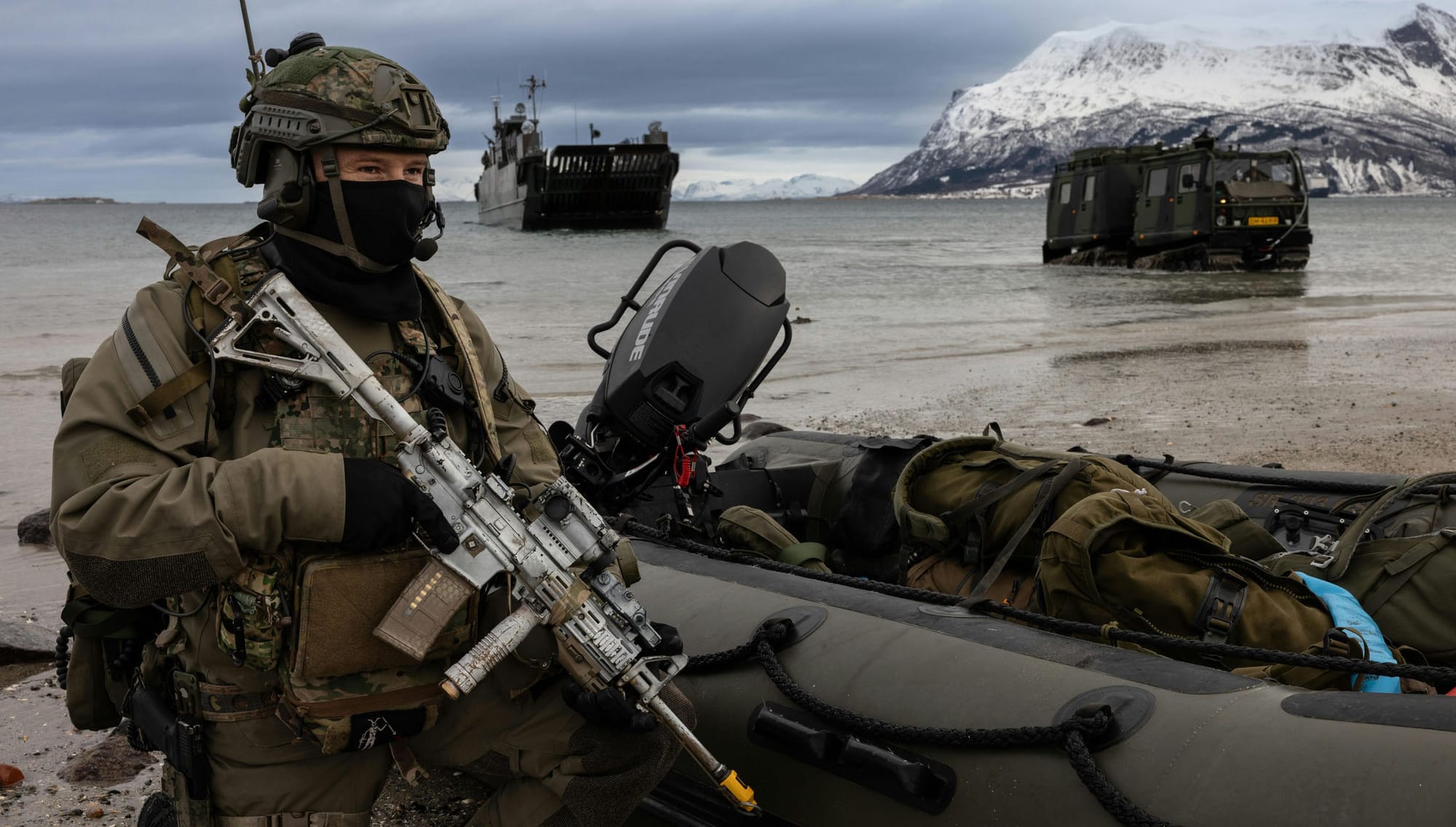The Arctic Debrief: US sanctions foil Novatek's plans to establish "LNG shadow fleet"
In this edition: US sanctions foil Novatek's plans to establish "LNG shadow fleet;" Top US and Nordic generals discuss Arctic security and military cooperation; China and Russia prepare plans for joint Arctic research; and Canada opens "first-of-a-kind" research facility in Arctic region.

In this edition:
- US sanctions foil Novatek's plans to establish "LNG shadow fleet"
- Top US and Nordic generals discuss Arctic security and military cooperation
- China and Russia prepare plans for joint Arctic research
- Canada opens "first-of-a-kind" research facility in Arctic region
Latest Developments
US sanctions foil Novatek's plans to establish "LNG shadow fleet"

Earlier this month, satellite imagery showed that Russian LNG company Novatek was using a "shadow fleet" to avoid sanctions imposed on its Arctic LNG-2 facility.
The Pioneer and Asya Energy were two of the LNG vessels identified in assisting Novatek with circumventing US sanctions. In response the US published a new set of sanctions targeting multiple companies (and their leadership) and vessels working with Novatek.
To make matters worse, for Novatek and the shipping companies, due to the new sanctions they are now prohibited from shipping LNG from other Russian facilities which were not previously sanctioned.
Arctic LNG-2 is a major project that had significant investments from the Russian government and foreign capital investment firms from Japan and France. The project saw an increasing amount of sanctions following Russia's invasion of Ukraine, which led to the foreign firms pulling out of the project.
Novatek faced further struggles as it could not complete all the LNG facilities due to its inability to access western technology and components. Although China helped finish the project the LNG produced at the facilities could not be shipped due to additional US sanctions.
Prior to 2022, Russia was expected to produce 40% of global LNG exports by 2040 (it is currently at 8%) but those plans have been heavily derailed over the past two years.
Top US and Nordic generals discuss Arctic security and military cooperation

Top generals from the United States, Denmark, Finland, Norway, and Sweden met at the Nordic Warfighting Symposium in Oslo to discuss the security of the Nordic states' Arctic regions.
The meeting focused on cross-national cooperation between the militaries and a shift in how the region is approached, caused by the addition of Sweden and Finland into NATO. The main focus of the discussion revolved around improving interoperability among the nations' armed forces in the European Arctic.
In addition to interoperability of military personnel, the symposium allowed for the nations to work on the integration of their respective military technology to further ease multinational operations.
The idea behind the meeting is to ensure that US and Nordic forces stationed throughout the region are prepared to respond to any military threat.
NATO allies have not shied away from identifying Russia and China as the main potential adversaries in the Arctic. The two nations have increased their cooperation in the Arctic, both countries expressing interest in region including land belonging to NATO members.
That includes Norway's Svalbard archipelago, located off Norway's northern coast. The territory is mainly used for mineral excavation and scientific research. The Svalbard Treaty of 1920 recognized Norway's sovereignty over the region, but provided multiple countries, including Norway, Russia, France, and Japan, with the right to conduct economic activities on the land.
This led to two Soviet settlements being established in Svalbard, Barentsburg and Pyramiden, with a focus on coal mining. Although the region is not demilitarized there are certain restrictions on Norway's right to exercise its sovereignty. This has led to a complicated security situation for Norway which is looking to increase its authority over the region.
China and Russia prepare plans for joint Arctic research

A Chinese delegation made up of leading polar researchers visited Russia's research centre in Barentsburg to discuss opportunities to cooperate on Arctic research.
While Russia invited the delegation to participate in reseach in its Barentsburg facilities, the Chinese invited Russian scientists to join its mission on the Arctic research vessel Xue Long 2. Although research missions may seem harmless, China has used scientific research as a "shoe in the door" to establish a presence that it can then exploit to further expand its influence in a given region.
A week after this mission the Norwegian Police Security Service reported an increased Chinese state interest in Svalbard that could have implications for national security. It has noted an increasing presence of Chinese students and researchers on the archipelago, as well as companies and individuals looking to purchase property, land, and real estate.
The report also notes that a number of Chinese tourists were observed behaving in a suspicious manner that lead the police to believe they may have been mapping critical buildings and infrastructure.
In the same week the Xue Long 2 made its first trip to the port of Murmansk in Northern Russia. The ship sailed from Beijing through the Northern Sea Route to reach its destination. The journey is mostly symbolic, but significant as Russia and China are continually increasing their cooperation in the region.
Canada opens "first-of-a-kind" research facility in Arctic region

A "first-of-its-kind" research facility has opened in Northern Canada in the city of Churchill, Manitoba.
The research centre will study Canada's Arctic passage which could help better understand the effects of climate change on the region, which could improve the navigability of the area. It will also study marine mammals living in the region. The facility will also be used to collect data on oil spills and help detect them.
The research facility is one of many federal investments to increase economic development in its Arctic region. Along side economic investments, the federal government aims to strengthen its ability to protect its northern territory through new equipment, such as P8-Poseidon surveillance aircraft and MQ-9B aerial drones, and by constructing or expanding military bases along its north.

